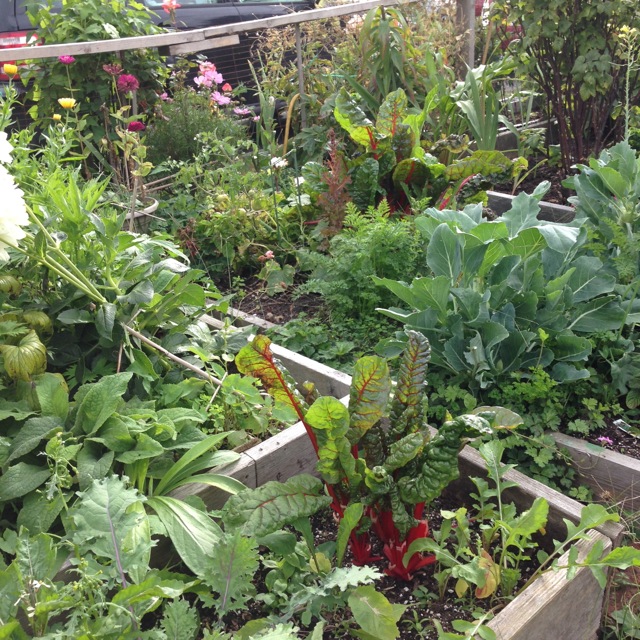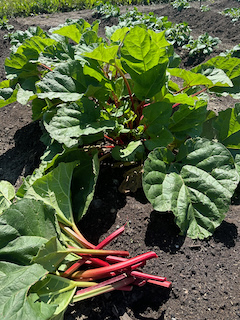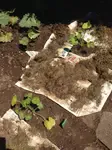Summer Vegetable Gardening
Summer vegetable gardening is a rewarding endeavor that brings fresh, homegrown produce right to your table. With proper planning and care, you can cultivate a bountiful harvest of summer favorites such as tomatoes, cucumbers, peppers, zucchini, and more. This guide will walk you through the essentials of starting and maintaining a successful summer vegetable garden.
 Keep your veggies growing all summer
Keep your veggies growing all summerCaring for your Garden
Watering
Consistent watering is essential for a healthy garden. Tips for effective watering include:
• Morning Watering: Water in the morning to reduce evaporation and allow leaves to dry, minimizing disease risk.
• Deep Watering: Water deeply to encourage root growth. Aim for 1-2 inches of water per week, depending on weather conditions.
• Mulching: Apply mulch around plants to conserve moisture, suppress weeds, and regulate soil temperature.
Fertilizing
Regular fertilization promotes vigorous growth and high yields. Use a balanced fertilizer or organic options like compost tea or fish emulsion. Follow the recommended application rates and frequency for each vegetable.
Pest and Disease Management
Monitor your garden regularly for signs of pests and diseases. Employ integrated pest management (IPM) strategies such as:
• Companion Planting: Plant herbs and flowers that attract beneficial insects or repel pests.
• Physical Barriers: Use row covers or netting to protect plants from insects and birds.
• Organic Sprays: Apply neem oil or insecticidal soap to control pests. Use copper-based fungicides to manage fungal diseases.
Summer Vegetable Gardening for June, July, and August
June:
 Harvesting Rhubarb
Harvesting Rhubarb- Harvesting and enjoying your veggies. June is the month you are harvesting and enjoying spinach, lettuce, salad greens, oriental greens, beet greens, radishes, green onions, peas, early savoy cabbages, and swiss chard as some examples.
- Sowing outdoors. Now is the time to plant snap beans, carrots, beets, lettuce, rutabagas, turnips, parsnips, sweet corn. Early June is still a great time to get those heat loving transplants such as tomatoes, squash, eggplants and peppers into the ground. You will be enjoying harvesting these in late summer and into the early fall months.
- Keep your plants happy. Weeding, watering and fertilizing are all important for regular maintenance of your vegetable garden. Now is a great time to be adding mulch to your garden beds. Pull soil up and around your potatoes plants to keep the tubers covered. Stake your tomatoes to keep the fruit from touching the ground. Keep a watch out for pests like aphids, cabbage worms.
July:
 Harvested beans
Harvested beans- Harvest: This month you will be starting to harvest cucumbers, zucchini, beans, and broccoli. Continue to harvest your lettuce, salad greens, cabbage, and green onions.
- Sow: For harvesting in late fall and winter months now is the time to start sowing beets, carrots, lettuce, kale, turnips, and parsnips directly into your garden. Replant the areas where these have been already harvested.
- Keep your garden clean: Make sure you remove the plant debris after harvesting so as not to attract pest and disease. If you have to remove diseased plants, make sure you immediately place the plant in a plastic bag so you do not spread the problem. Mature vegetable plants usually do not need as much water as when they are first growing, but regular watering especially for your containers is still very important for producing fruit and pods.
August:
 Harvesting Potatoes
Harvesting Potatoes- Harvest: Most crops you have planted in the last few months will probably be ready to harvest this month. Some examples are beans, cucumbers, cabbage, broccoli, onion, tomatoes, early potatoes, summer squash, carrots, lettuce, corn and Swiss chard. Take time to can or freeze the surplus for eating later in the year. Save seeds from your most productive and tasty veggies so you can plant them again next year.
- Sow: This month you can succession plant more lettuce, parsley, and salad greens.
- Keep your vegetable plants happy. Fertilize early in the month so the plants get what they need to keep producing vegetables for the next couple of months. Water regularly especially in hot, dry weather. Give shade for emerging seedlings in hot sunny weather. Keep your garden clean of debris.
Please take the time to sign up for my monthly ezine "Vegetable Gardening Hints".
A summer garden is always wonderful for the fresh, homegrown vegetables and are a delight to the senses. The beautiful colours of your fabulous harvest. Use your harvest in salads, stir-fries, salsas, and other delicious dishes. Share the bounty with friends and family, or preserve your harvest through canning, freezing, or drying.
Summer vegetable gardening is a fulfilling hobby that provides fresh, nutritious produce and a deeper connection to nature. With careful planning, attentive care, and a bit of patience, you can enjoy a vibrant and productive garden all summer long. We hope are tips are helpful. Happy gardening!
Return from Summer Vegetable Gardening to homepage
Recent Articles
-
Organic Gardening soil amendments - List of material?
Aug 09, 25 10:57 AM
What materials are best used as organic gardening soil amendments? -
Tips for disease control in your vegetable garden
Jul 14, 25 11:15 AM
Easy tips for disease control to keep your vegetable growing its best. -
Joy of vegetable Gardening
Jul 14, 25 11:01 AM
Everything you need to know is right here to have Joy of Vegetable Gardening





